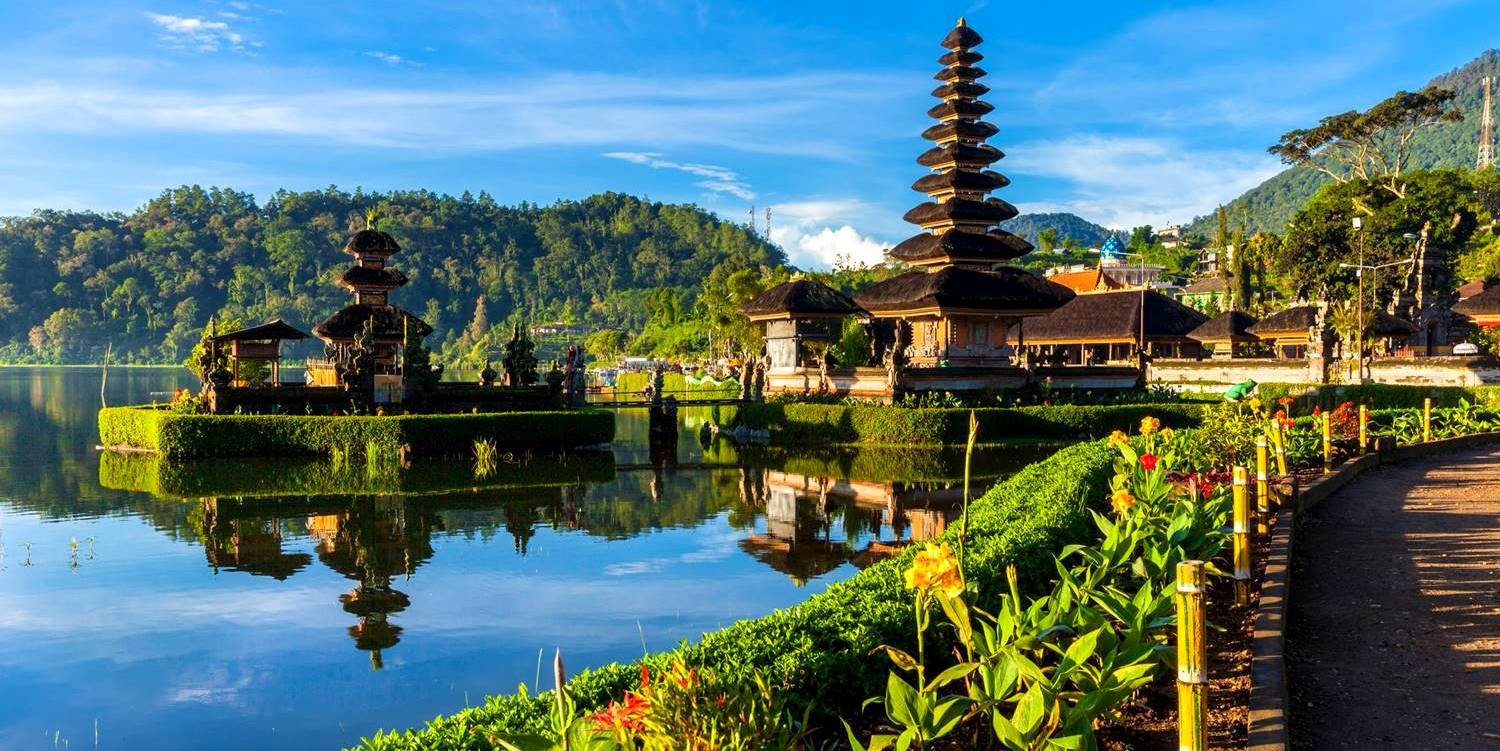Beach Hopping
Beach hopping in Bali is a quintessential activity for anyone visiting this idyllic island paradise. With a vast array of stunning beaches, each offering its own unique atmosphere, Bali is the perfect place to explore diverse coastal landscapes. Whether you're looking for serene spots to relax, vibrant beaches with excellent surf conditions, or hidden gems away from the crowds, Bali has it all. Here are some key highlights for the ultimate beach hopping experience:
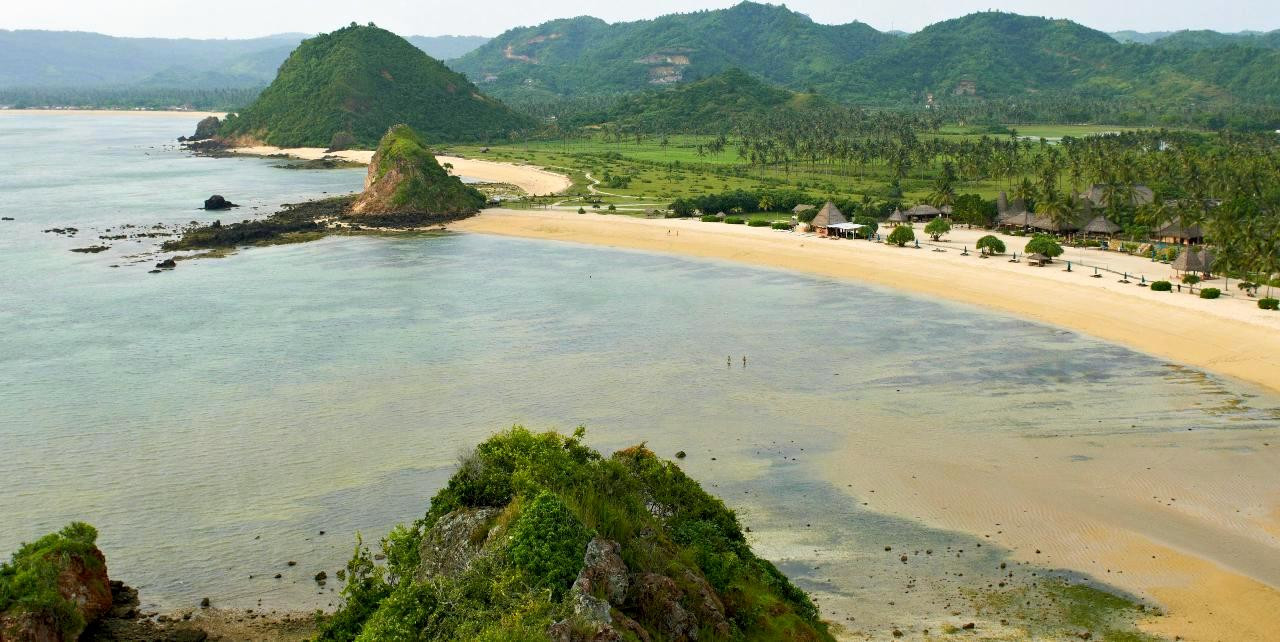
-
Kuta Beach: Famous for its lively atmosphere and great surf, Kuta is ideal for those looking to ride the waves or enjoy the vibrant nightlife.
-
Seminyak Beach: Upscale and chic, Seminyak attracts a stylish crowd with its luxurious beach clubs and high-end boutiques.
-
Nusa Dua Beach: Known for its calm waters and family-friendly facilities, Nusa Dua is perfect for a relaxed day under the sun.
-
Jimbaran Bay: Best enjoyed during sunset, Jimbaran is renowned for its seafood dinners right on the beach, offering a memorable culinary experience.
-
Uluwatu: Home to some of the best surf spots in Bali, Uluwatu boasts dramatic cliffside views and a laid-back vibe.
-
Padang Padang: A surfer's haven and a filming location for the movie "Eat Pray Love," this beach offers crystal clear waters and lovely sandy stretches.
-
Lovina: Located in the north of Bali, Lovina is famous for its black volcanic sand and the opportunity to spot dolphins.
-
Amed: Known for its incredible snorkeling and diving spots, Amed is a quieter alternative to Bali's southern beaches, with breathtaking underwater life.
Beach hopping in Bali is not just about sunbathing and surfing; it's about discovering diverse cultures, cuisines, and landscapes. Each beach has its own story and character, making every stop a unique adventure. Whether you're planning a day trip or an extended tour along the coast, Bali's beaches promise unforgettable experiences.
Visiting Temples
Visiting the temples of Bali offers a profound glimpse into the spiritual and cultural heart of the island. Each temple in Bali has its own unique charm, historical significance, and mystical allure, making temple tours a must-do activity for visitors. Here are some key highlights and insights for an enriching temple visiting experience in Bali:
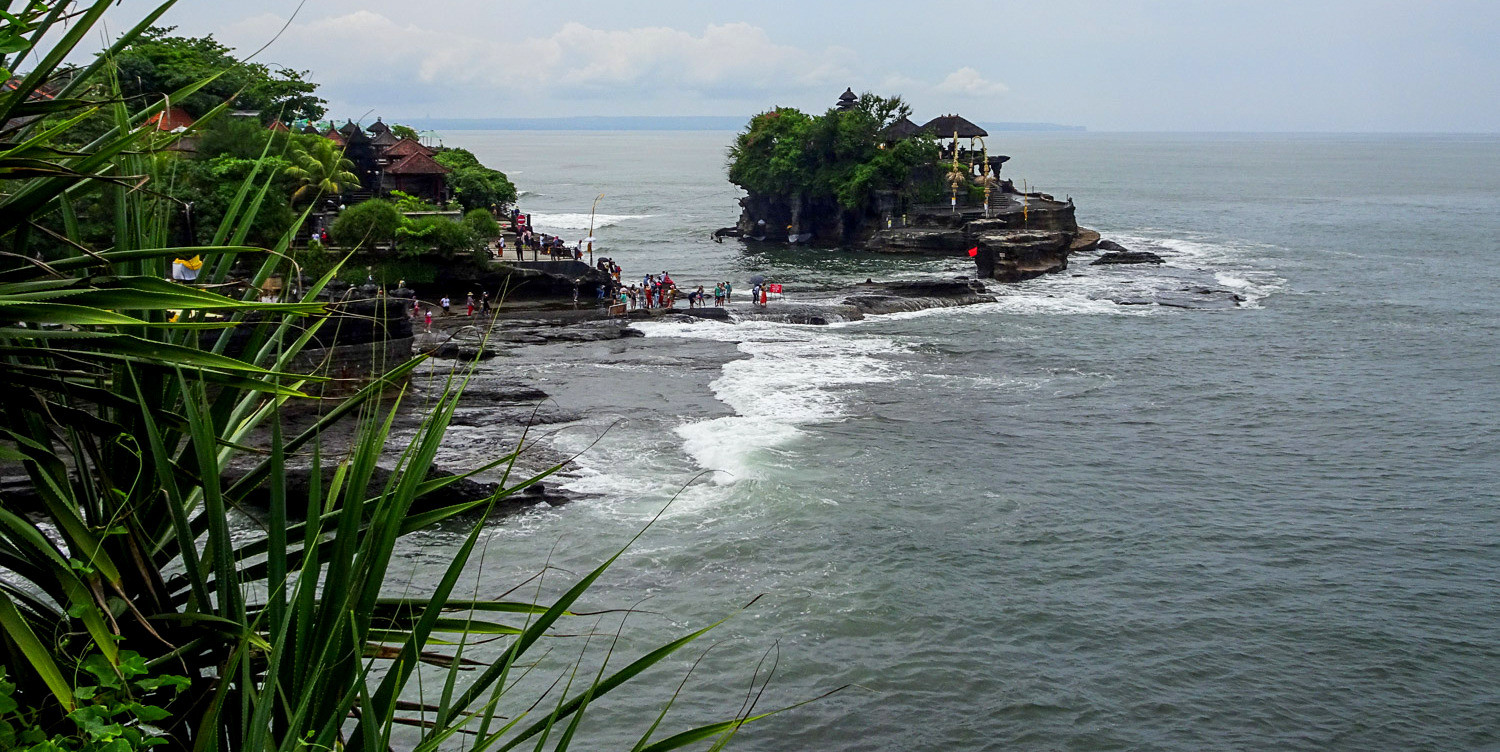
-
Pura Tanah Lot: Located in a unique offshore setting on a rocky islet, Tanah Lot is one of Bali’s most iconic and photographed temples. Best visited at sunset, the temple offers spectacular views and a chance to explore the blending of natural and spiritual elements in Balinese Hindu culture.
-
Uluwatu Temple: Perched dramatically on a cliff approximately 70 meters above sea level, Uluwatu Temple offers breathtaking views of the ocean and sunset. It's also famous for the Kecak dance performances that take place at dusk, providing a cultural show set against the stunning backdrop of the sea.
-
Besakih Temple: Known as the 'Mother Temple of Bali,' Besakih is the largest and holiest temple in Bali. Situated on the slopes of Mount Agung, it is a complex of 23 separate but related temples, with the largest and most important being Pura Penataran Agung. The temple complex hosts numerous ceremonies and pilgrimages, adding a vibrant layer of cultural observance.
-
Tirta Empul Temple: Famous for its holy spring water, Tirta Empul Temple is a popular spiritual cleansing spot for locals and tourists alike. Visitors can participate in a purification ritual, which involves a series of immersions in the water pools, believed to cleanse the soul and body.
-
Pura Ulun Danu Beratan: Situated by the serene Lake Beratan and often shrouded in a light mist, this picturesque temple appears to float on water on overcast days. It is dedicated to Dewi Danu, the goddess of lakes and rivers, and is crucial for the irrigation and water supply to the region.
-
Pura Lempuyang: Also known as the 'Gateway to Heaven,' Pura Lempuyang is famous for its stunning gateway that perfectly frames Mount Agung, offering a photogenic vista that is popular on social media. The temple sits atop a high mountain and requires a climb of over 1,700 steps, rewarding visitors with panoramic views.
Visiting these temples not only provides a deeper understanding of Bali's religious architecture and artistic heritage but also offers a chance to witness the daily spiritual practices that are central to Balinese life. Each temple visit can be a moment of reflection, admiration, and spiritual connection, making it a profoundly enriching part of any Bali itinerary.
Diving and Snorkeling
Diving and snorkeling in Bali are among the island's most thrilling activities, offering adventurers the chance to explore vibrant underwater worlds teeming with marine life and colorful coral gardens. Bali's waters are renowned for their diverse ecosystems and the clarity that invites divers and snorkelers of all levels. Whether you're a seasoned diver or a first-time snorkeler, Bali's aquatic environments promise an unforgettable experience.
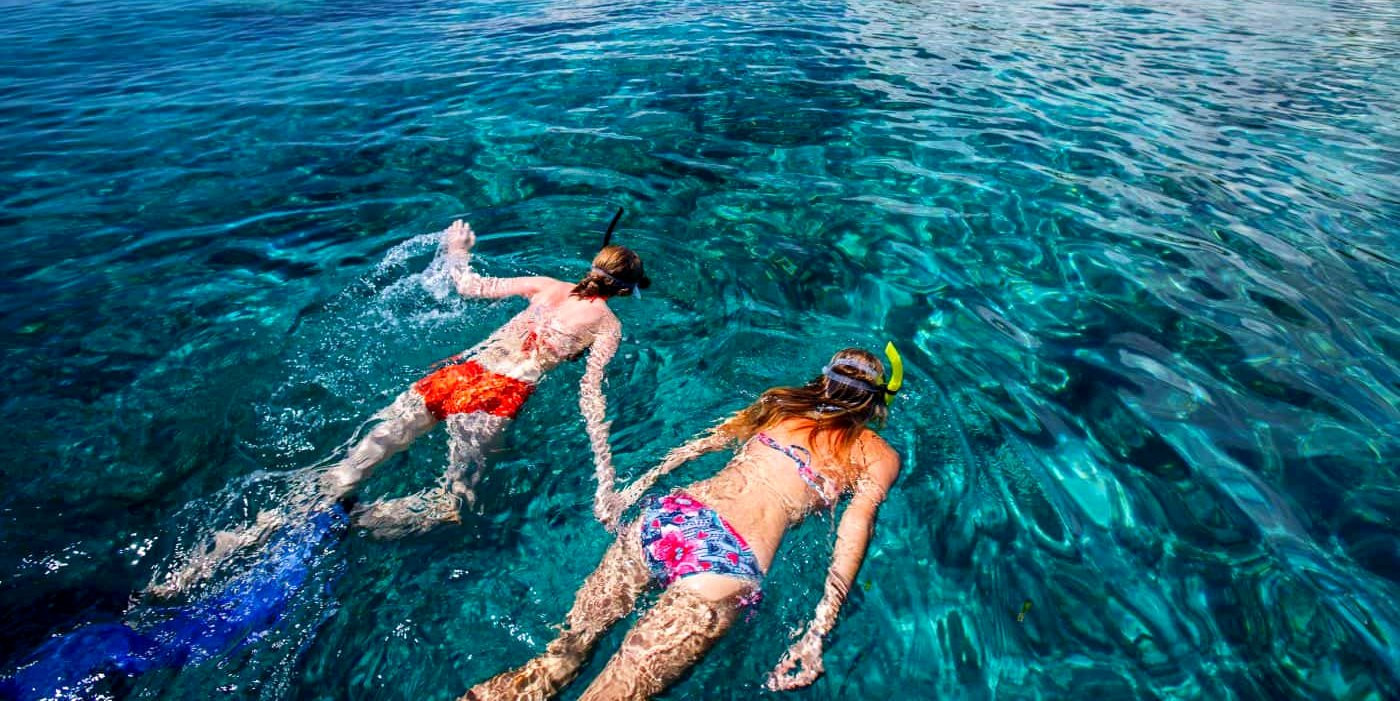
Key Diving and Snorkeling Spots in Bali
-
Tulamben: This small fishing village on the northeast coast of Bali is famous for the USAT Liberty shipwreck, a World War II cargo ship that lies just 30 meters offshore. The wreck is covered in coral and home to a rich array of marine life, making it one of the most iconic dive sites in Bali.
-
Menjangan Island: Part of the West Bali National Park, Menjangan Island is known for its wall diving and is considered one of the best places for snorkeling in Bali due to its calm, clear waters and abundant marine life, including a variety of reef fish, eels, and occasional sightings of larger marine creatures.
-
Nusa Penida and Nusa Lembongan: These islands offer some of the most dramatic underwater landscapes, including coral ridges and deep drop-offs. The waters here are also famous for Manta Ray encounters and the elusive Mola Mola (oceanic sunfish), especially around Crystal Bay and Manta Point.
-
Amed: Known for its laid-back atmosphere and beautiful black sand beaches, Amed is a fantastic spot for both snorkeling and diving. The area boasts an array of dive sites with gentle currents, perfect for beginners and those looking to enjoy leisurely dives with vibrant fish and coral life.
-
Padang Bai: Located on the east coast, Padang Bai offers access to several dive sites just a short boat ride from the shore. Sites like Blue Lagoon and Jetty provide easy conditions and a wealth of marine biodiversity, including reef sharks, turtles, and colorful nudibranchs.
What to Expect When Diving and Snorkeling in Bali
When planning a diving or snorkeling trip in Bali, consider the following:
-
Seasonality: The best time for diving in Bali is generally from April to November, during the dry season, when visibility is at its best.
-
Water Temperature: Water temperatures usually range from 26°C to 29°C (79°F to 84°F), making for comfortable dives without the need for thick wetsuits.
-
Marine Conservation: Bali takes pride in its marine conservation efforts. It's important for visitors to respect local guidelines and practices to preserve the underwater environment.
-
Dive Schools and Tours: Bali offers a plethora of dive schools and tour operators catering to all levels of experience. Many offer PADI certification courses, from beginner to advanced levels.
Exploring Bali's underwater realms adds a layer of adventure and beauty to the Bali experience, revealing a world as vibrant and diverse as the island itself. Whether witnessing the majestic dance of manta rays or exploring historical shipwrecks, diving and snorkeling in Bali are activities that should not be missed.
Cultural Experiences
Bali is not just a tropical paradise; it is also a vibrant tapestry of culture, tradition, and spiritual heritage. Engaging in cultural experiences in Bali is essential for any traveler seeking to understand the island's deep-rooted customs and living traditions. From artistic expressions to spiritual rituals, Bali offers an array of activities that allow visitors to immerse themselves in its unique culture.

Key Cultural Experiences in Bali
-
Traditional Dance Performances: Experience the magic of Balinese dance, an integral part of the island's cultural identity. Attend performances of the famous Kecak Dance, known for its powerful chanting and dramatic fire dance, often performed at sunset in temples like Uluwatu. Another must-see is the Legong Dance, which showcases intricate movements and expressive gestures that narrate classical Balinese tales.
-
Temple Ceremonies: Visiting during one of Bali's numerous temple ceremonies offers a rare glimpse into the spiritual life of the Balinese. These ceremonies are colorful, festive, and steeped in tradition. Visitors are welcome to watch and sometimes participate, provided they adhere to the dress codes and cultural norms out of respect for the local customs.
-
Art and Craft Workshops: Bali's artistic villages, like Ubud, Batubulan, and Mas, are renowned for their crafts. Participate in workshops where you can learn skills such as wood carving, silver making, batik painting, or Balinese mask-making directly from skilled artisans. These experiences not only provide a hands-on understanding of the craftsmanship but also support local artisans.
-
Cooking Classes: Indulge in a culinary adventure by taking a Balinese cooking class. These classes often start with a visit to a local market to pick fresh ingredients, followed by a session of cooking traditional dishes such as Lawar, Babi Guling, or Sate Lilit. Cooking classes are a delicious way to connect with Bali's cultural heritage through its flavorful cuisine.
-
Spiritual and Healing Rituals: Bali is known as the island of healing, and participating in its spiritual practices can be a profound experience. Engage in a Melukat ceremony, a traditional Balinese purification ritual that involves bathing in holy waters believed to cleanse the body and soul. Visit healing practitioners or try a session of Balinese yoga or meditation in places like Ubud, which is considered the spiritual heart of Bali.
-
Cultural Festivals: Plan your visit around one of Bali’s many cultural festivals to see the island at its most vibrant. The Bali Arts Festival, a month-long summer festival in Denpasar, showcases the island’s artistic wealth with daily performances, handicraft exhibitions, and other cultural activities. Another significant event is the Galungan Festival, which celebrates the victory of good over evil, transforming the island with ornate decorations and festive rituals.
Engaging in these cultural experiences in Bali offers more than just activities; they provide a window into the soul of the island. Each interaction with its culture deepens the connection between visitor and destination, making your journey an enriching and unforgettable part of your travels.
Yoga and Wellness Retreats
Bali, often referred to as the wellness capital of Asia, is a sanctuary for those seeking peace, rejuvenation, and a deeper connection with themselves. The island's serene landscapes, combined with its spiritual aura, make it an ideal destination for yoga and wellness retreats. Here’s what you can expect when you embark on a wellness journey in Bali with Relax Getaways.
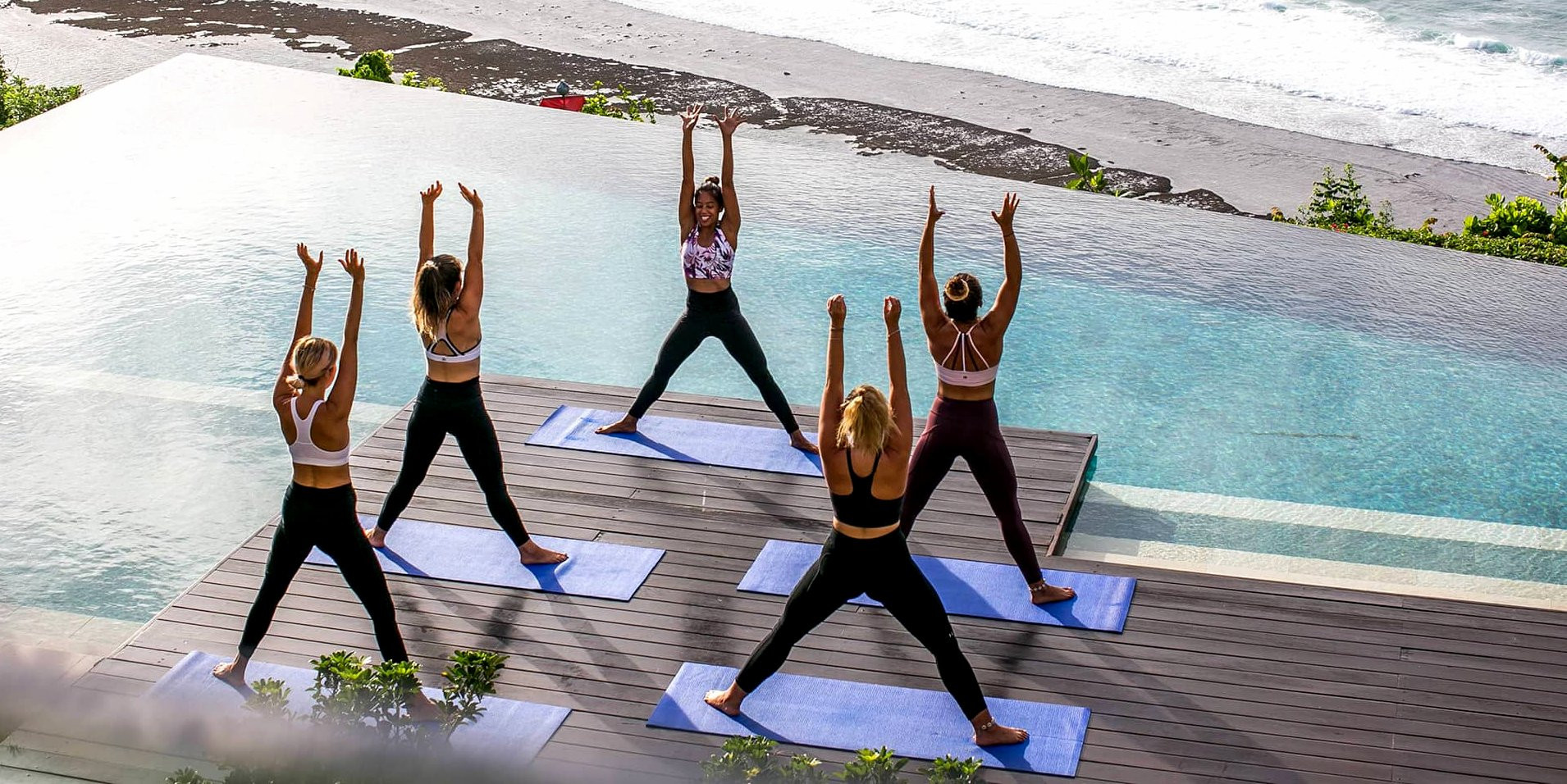
Key Aspects of Yoga and Wellness Retreats in Bali
-
Diverse Yoga Practices: Bali offers a wide range of yoga experiences suitable for all levels, from beginners to advanced practitioners. Retreat centers specialize in various styles, including Vinyasa, Hatha, Kundalini, and Yin yoga. These sessions are often held in open-air studios surrounded by lush rice fields or overlooking the tranquil ocean, providing a perfect backdrop for mindfulness and meditation.
-
Holistic Wellness Programs: Wellness retreats in Bali focus on holistic health, combining physical activities with therapies and treatments that promote overall well-being. These programs may include meditation sessions, spa treatments, detox therapies, sound healing, and more, tailored to help you achieve personal health and wellness goals.
-
Nutritional and Organic Meals: Nutrition plays a central role in Bali’s wellness retreats. Most retreats offer meals prepared with fresh, organic ingredients that are locally sourced. The focus is on nutritious and balanced diets, which often include vegetarian, vegan, and raw food options to cleanse and nourish the body.
-
Scenic and Peaceful Locations: Bali is home to numerous retreat centers located in some of the most serene and beautiful parts of the island. Places like Ubud, known as the cultural and spiritual heart of Bali, offer an environment that naturally lends itself to healing and reflection. Other locations include beachfront settings in Canggu and secluded spots in the mountains of Sidemen, providing a tranquil escape from everyday stress.
-
Cultural Integration: Many yoga and wellness retreats incorporate elements of Balinese culture into their programs to offer a more immersive experience. This could include participation in local spiritual ceremonies, cultural workshops, and excursions to sacred sites, allowing guests to connect more deeply with the cultural essence of Bali.
-
Expert Guidance: Retreats are often guided by experienced instructors and wellness practitioners who are skilled in various disciplines of health and spirituality. These experts provide personalized attention, ensuring that your wellness journey is enriching and transformative.
A yoga and wellness retreat in Bali is not just about relaxation and rejuvenation; it’s an opportunity to undergo a profound personal transformation in one of the world’s most enchanting wellness destinations. With Relax Getaways, your journey towards health and harmony is just a booking away. Whether you're seeking to deepen your yoga practice, detoxify your body, or simply unwind, Bali’s wellness retreats offer a nurturing environment to restore your spirit.
Explore Rice Terraces
Exploring the rice terraces of Bali offers a unique and unforgettable experience, allowing visitors to immerse themselves in the stunning natural beauty and agricultural heritage of the island. Bali's rice terraces, sculpted into the hills and mountains over centuries, are not only a testament to traditional Balinese farming methods but also an iconic part of the landscape that embodies the harmonious relationship between nature and mankind.
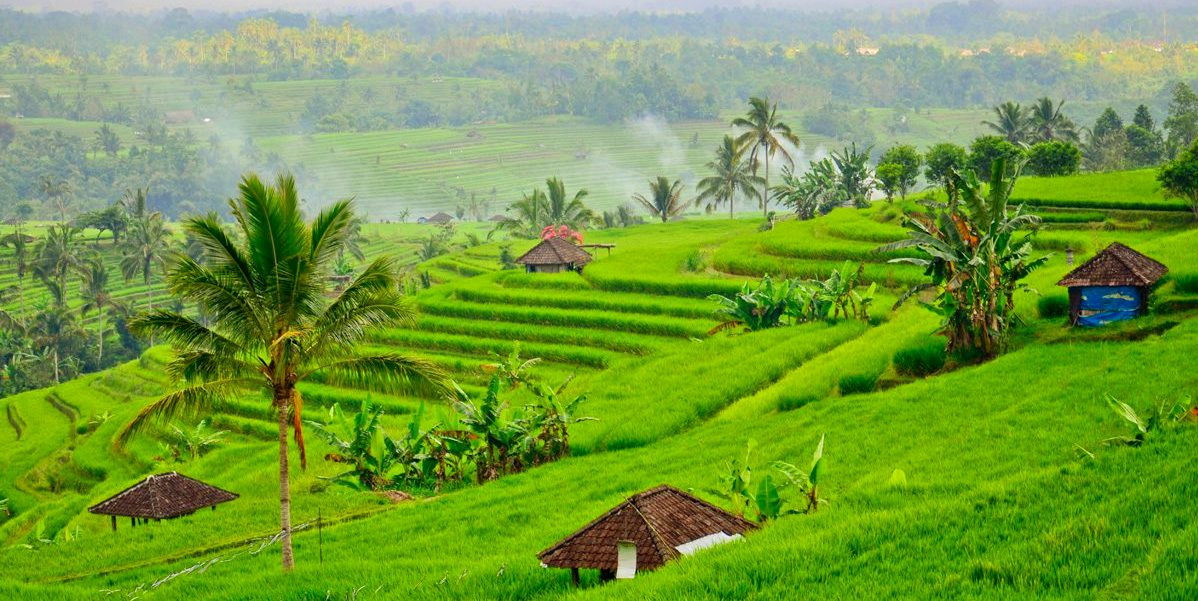
Key Destinations to Explore Rice Terraces in Bali
-
Tegalalang Rice: Terraces Located near Ubud, the Tegalalang Rice Terraces are among the most famous and photographed terraces in Bali. This area offers a spectacular vista of layers upon layers of greenery and is a perfect example of Bali’s subak system, the traditional cooperative irrigation system that dates back to the 9th century. Visitors can walk through the terraces, enjoy local cafes overlooking the fields, or even take part in a traditional farming experience.
-
Jatiluwih Rice: Terraces A UNESCO World Heritage site, the Jatiluwih rice terraces span over 600 hectares in the region of Tabanan. These terraces are less commercialized and offer a more authentic and tranquil experience. The panoramic views of the lush green fields against the backdrop of Mount Batukaru are breathtaking. Hiking through Jatiluwih provides a deeper understanding of the subak system and the cultural landscape of Bali.
-
Sidemen Valley: Sidemen Valley in East Bali is another serene location where visitors can explore extensive rice fields with relatively fewer tourists. The area exudes a peaceful charm and is known for its traditional villages and rural scenery. Walking tours through Sidemen often involve interactions with local farmers and insights into the daily routines of rural Balinese life.
-
Rendang Village: Not far from Sidemen, Rendang offers another vantage point for those interested in seeing more of Bali's rural landscapes and traditional farming practices. The village is surrounded by rice fields and offers dramatic views of Mount Agung, providing a different perspective on Bali's agricultural heritage.
What to Expect When Exploring Rice Terraces
-
Scenic Walks and Hikes: Many rice terraces are accessible via walking paths that sometimes include steep steps and narrow walkways. Wear comfortable shoes and be prepared for a bit of a workout, especially in the larger terrace areas like Jatiluwih.
-
Cultural Insight: Visiting the rice terraces is a great opportunity to learn about the Balinese subak system, recognized by UNESCO as a World Heritage Cultural Landscape. This ancient irrigation system represents a philosophical concept of Tri Hita Karana, which brings together the realms of the spirit, the human world, and nature.
-
Photographic Opportunities: The rice terraces are incredibly photogenic. Visit during the early morning or late afternoon for the best light and to capture the vibrant greens and the intricate patterns of the terraces.
-
Local Encounters: Some terraces offer the chance to engage with local farmers, participate in traditional farming activities, or even enjoy a meal prepared with freshly harvested rice.
Exploring Bali’s rice terraces is more than just a sightseeing activity; it’s an immersive experience that connects visitors with the island’s culture, history, and breathtaking natural beauty. Whether you're an avid photographer, a nature lover, or a culture enthusiast, the rice terraces of Bali provide a peaceful and enriching day out in the countryside.
Water Sports
Bali, with its extensive coastline and warm tropical waters, is a haven for water sports enthusiasts. From adrenaline-pumping activities to more relaxed aquatic experiences, Bali offers a vast array of water sports that cater to all levels of adventure and expertise. Here’s an overview of the most popular water sports in Bali and what you can expect when you choose to indulge in these thrilling activities.

Top Water Sports in Bali
-
Surfing: Bali is internationally renowned for its surfing spots, which cater to both beginners and professional surfers. The best beaches for surfing include Kuta, Canggu, and Uluwatu, where surf schools and rentals are readily available. Whether you're looking to catch your first wave or carve up some serious swell, Bali’s surf spots provide the perfect backdrop.
-
Snorkeling and Scuba Diving: The clear, rich waters around Bali are perfect for snorkeling and diving. Explore vibrant coral reefs and come face-to-face with a diverse range of marine life. Notable spots include Menjangan Island for its preserved coral walls, Tulamben for the famous USAT Liberty shipwreck, and the crystal-clear waters around Nusa Penida.
-
Jet Skiing: For those looking for speed and excitement, jet skiing is available at many of the more touristy beaches like Tanjung Benoa, Nusa Dua, and Sanur. Rentals and guided experiences ensure that even beginners can safely enjoy the thrill of racing across the water’s surface.
-
Parasailing: Parasailing offers a unique way to view Bali’s stunning coastline from above. This activity is especially popular in Tanjung Benoa, where you can soar over the ocean and enjoy panoramic views of the island.
-
Banana Boat Rides: Ideal for families and groups, banana boat rides are a fun and exhilarating way to enjoy the water. Expect a bumpy and exciting ride as you hold on tight while being towed by a speedboat. This activity is widely available at tourist-friendly beaches like Kuta and Nusa Dua.
-
Stand-Up Paddleboarding (SUP): For a more laid-back experience, try stand-up paddleboarding. It’s a great way to explore Bali’s calm waters and is excellent for all ages. Popular spots for SUP include Sanur’s gentle waves and the serene waters of Jimbaran Bay.
-
Kite Surfing: Bali’s consistent winds make it an excellent spot for kite surfing, particularly around the areas of Sanur and Nusa Dua. There are several schools offering courses for beginners and equipment rentals for more experienced kite surfers.
What to Consider When Participating in Water Sports in Bali
-
Safety First: Always check that the service providers are certified and that they offer proper safety equipment and briefings.
-
Environmental Awareness: Be conscious of the marine environment. Avoid touching or stepping on coral, and always dispose of waste properly.
Water sports in Bali are not just about excitement and adventure; they also offer the chance to connect with the natural beauty of the island uniquely and engagingly. Whether you’re looking to ride the waves, explore underwater wonders, or simply enjoy the thrill of speed on the water, Bali’s array of water sports provides endless fun under the sun.
Hiking and Adventure Sports
Bali is not just a haven for beach lovers and cultural enthusiasts but also a paradise for adventurers and thrill-seekers. The island's varied landscape of volcanic mountains, lush forests, and hidden waterfalls makes it an excellent destination for hiking and other adventure sports. Whether you're an experienced hiker looking for a challenging trek or a beginner eager to explore the great outdoors, Bali offers a plethora of options.
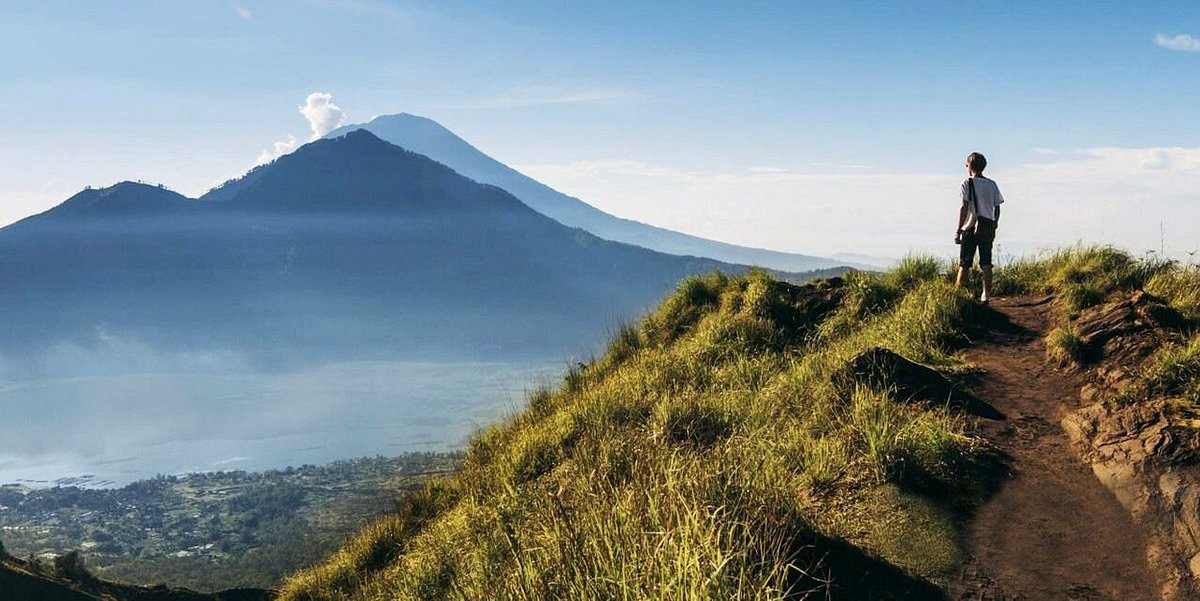
Top Hiking and Adventure Sports in Bali
-
Mount Batur: Sunrise Hike One of the most popular treks in Bali, the Mount Batur sunrise hike offers a rewarding experience for those willing to wake up early. The hike typically starts around 2 AM to reach the summit by sunrise, providing breathtaking views of the surrounding landscape as the sun rises over the caldera lake. The trek is moderately challenging but suitable for most fitness levels.
-
Mount Agung: Trekking For a more challenging adventure, Mount Agung presents a tougher climb. As Bali's highest mountain, it demands good physical condition and proper preparation. The hike leads you to the summit for spectacular sunrise views above the clouds, overlooking the whole island.
-
Sekumpul Waterfall Hike: Located in the northern part of Bali, the hike to Sekumpul Waterfall involves navigating through lush rainforest and crossing streams to discover Bali’s most majestic waterfalls. The natural beauty and serene atmosphere make this trek well worth the effort.
-
Canyoning: Bali offers unique canyoning experiences that allow you to explore hidden gorges and waterfalls in the heart of Bali’s jungle. Areas like Gitgit and Aling-Aling Waterfall provide exciting canyoning opportunities that include slides, jumps, and rappels.
-
Cycling Tours: Explore Bali’s rural landscapes and cultural sites differently through a cycling tour. Routes often take riders through scenic roads, rice terraces, and traditional villages, offering a closer look at the Balinese way of life away from the tourist crowds.
-
ATV Rides: Adventure through Bali’s rugged terrain and muddy trails on an ATV. This thrilling ride lets you explore off-the-beaten-path locations and is a fun way to experience the island’s natural beauty.
-
Zip-lining: For those seeking an adrenaline rush, zip-lining over the lush canopies and rice fields provides a thrilling perspective of Bali’s stunning landscape. Locations like Bedugul offer zip-lining experiences that cater to adventure lovers of all ages.
What to Expect and Prepare for Adventure Sports in Bali
-
Safety First: Ensure that you always go with a reputable company that provides experienced guides and proper safety equipment.
-
Wear Appropriate Gear: Especially for hiking and canyoning, it’s crucial to wear suitable footwear and comfortable clothing. For water-related activities, a change of clothes and waterproof bags are recommended.
-
Stay Hydrated: The tropical climate can be dehydrating, especially during physical activities, so carry enough water and snacks.
-
Respect Nature: Maintain the beauty of Bali’s natural sites by following guidelines, not leaving any trash, and respecting wildlife and plant life.
Hiking and adventure sports in Bali can transform your holiday into an unforgettable adventure, filled with stunning views and exhilarating experiences. Whether scaling volcanic peaks at sunrise or navigating through jungle rivers, these activities offer something for every adventurer.
Nightlife
Bali's nightlife is as vibrant and varied as its scenic landscapes, offering everything from laid-back beach bars to high-energy nightclubs and everything in between. Whether you're looking to dance the night away, enjoy a romantic dinner by the sea, or catch live music, Bali has a nightspot that caters to every taste and mood. Here's your guide to experiencing the best of Bali's nightlife.

Top Spots for Nightlife in Bali
-
Kuta: Kuta is the epicenter of Bali's nightlife, known for its bustling club scene and late-night parties. Popular venues like Sky Garden offer multiple floors with different music genres catering to a diverse crowd. The area is perfect for bar-hopping, with numerous options all within walking distance of each other.
-
Seminyak: Seminyak offers a more upscale nightlife experience with stylish beach clubs, chic cocktail bars, and world-class restaurants. Potato Head Beach Club and Ku De Ta are iconic spots that blend fine dining with dance music and beachfront views, ideal for sunset cocktails and evening parties.
-
Canggu: Canggu is popular among the younger crowd and expats, known for its bohemian vibe and surf-inspired hangouts. Places like Old Man’s and The Lawn are great for casual drinks, live music, and beach parties. Canggu also offers a variety of late-night spots where DJs spin everything from techno to tropical house.
-
Ubud: While known for its serene and cultural atmosphere, Ubud also offers a quieter, more refined nightlife. Jazz Café and CP Lounge serve as perfect venues for enjoying live music and a relaxed evening with friends or a loved one.
-
Jimbaran: For those seeking a more romantic or relaxed evening, Jimbaran is the place to go. Enjoy a seafood dinner on the beach, with tables set right on the sand and the sound of the waves complementing your meal. After dinner, you can enjoy a quiet drink at one of the local bars.
-
Legian: Often considered the bridge between Kuta and Seminyak, Legian is lively yet less chaotic than Kuta. Sky Garden’s rooftop lounges and bars offer great music and a mix of local and international crowds.
What to Expect from Bali's Nightlife
-
Diverse Music: From international DJs playing electronic dance music to live bands covering popular hits, Bali's nightlife caters to a wide range of musical tastes.
-
Theme Nights and Events: Many clubs and bars host special theme nights or beach parties, so it's worth checking out their schedules in advance.
-
Dress Code: Most places are quite casual, but some of the upscale beach clubs and lounges in Seminyak might enforce a dress code, so it’s wise to dress smart-casual.
-
Opening Hours: While bars usually open in the late afternoon, clubs tend to get busy after 11 PM and can stay open till early morning, especially on weekends.
Bali's nightlife is dynamic and can offer memorable experiences, whether you're looking for a party, a cozy place to hang out, or a scenic spot to unwind. Each area of Bali provides a different slice of nightlife, ensuring that every night on the island can be as laid-back or as exhilarating as you wish.
Island Hopping
Island hopping in Bali is an exhilarating way to explore the diversity of the Indonesian archipelago. This popular activity allows visitors to discover the unique characteristics of each nearby island, from stunning marine life and crystal-clear waters to dramatic cliff views and tranquil beaches. Here’s a guide to some of the most captivating islands to visit around Bali, perfect for day trips or longer stays.
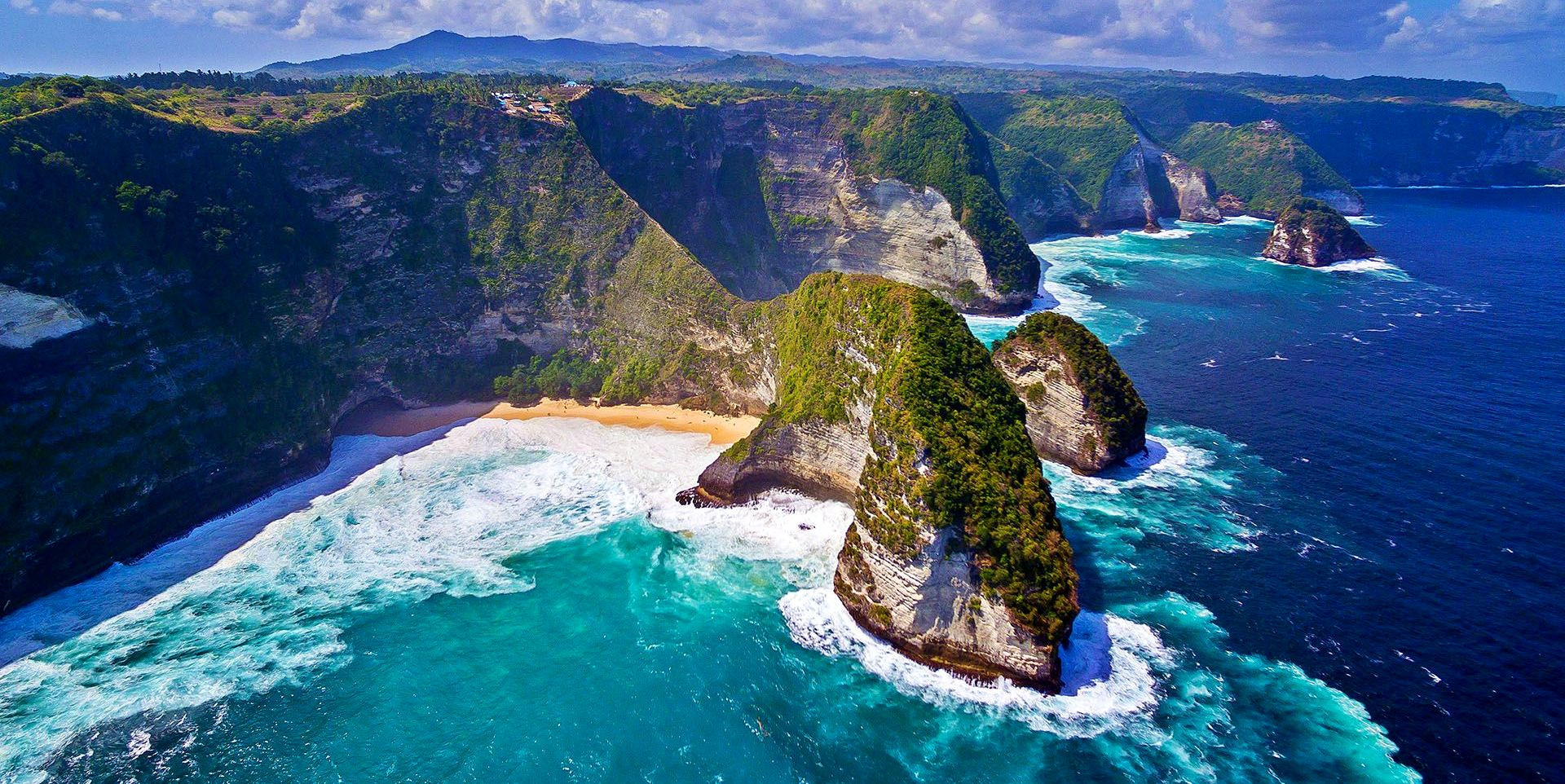
Top Destinations for Island Hopping from Bali
-
Nusa Penida: Nusa Penida is the largest and most popular of the three Nusa islands, known for its breathtaking landscapes like Kelingking Beach with its T-rex-shaped cliff, the serene Crystal Bay, and the natural infinity pool of Angel's Billabong. Diving and snorkeling are spectacular here, particularly at Manta Point, where you can swim with manta rays.
-
Nusa Lembongan: A short boat ride from Nusa Penida, Nusa Lembongan offers a more laid-back atmosphere, perfect for water sports such as snorkeling, diving, and surfing. The island is also home to beautiful mangrove forests, which can be explored by kayak or traditional boat.
-
Nusa Ceningan: Connected to Nusa Lembongan by a yellow suspension bridge, Nusa Ceningan is the smallest of the three Nusa islands. It's famous for its blue lagoon—a stunning natural pool where adventurous visitors can cliff jump.
-
The Gili Islands: Off the northwest coast of Lombok, the Gili Islands are three small islands: Gili Trawangan, Gili Meno, and Gili Air. Each has its personality: Gili Trawangan is known for its vibrant nightlife, Gili Meno for its serene environment and turtle sanctuary, and Gili Air for a good mix of relaxation and social activities. All three Gilis prohibit motorized vehicles, offering a tranquil escape with excellent snorkeling and diving opportunities.
-
Lombok: Often considered Bali’s less-commercialized sibling, Lombok offers stunning beaches, the majestic Mount Rinjani, and traditional Sasak culture. The southern coast near Kuta (not to be confused with Kuta, Bali) is rapidly developing into a major tourist destination with luxury resorts and pristine beaches.
Tips for Island Hopping in Bali
-
Plan Ahead: While spontaneous trips are exciting, some islands require a bit of planning, especially if you intend to stay overnight. Check boat schedules and availability of accommodations.
-
Safety First: Always check the weather conditions before setting out and opt for reputable boat operators to ensure a safe crossing.
-
Respect the Environment: Many of these islands are sensitive environmental zones. Be mindful of your impact by avoiding single-use plastics and respecting wildlife regulations.
-
Pack Appropriately: Bring essentials like sunscreen, water, snacks, and snorkeling gear. Some remote areas might not have easy access to shops or rentals.
Island hopping from Bali is an adventure that showcases the rich natural beauty and cultural diversity of Indonesia’s lesser-known islands. Each island offers unique experiences and sights, making them must-visit destinations for those looking to explore beyond Bali’s well-trodden paths. Whether you’re looking for adventure, nightlife, or just a quiet spot on the beach, the islands around Bali offer something for every traveler.
Tips for Top Activities in Bali
Here’s a combined list of essential tips across various top activities in Bali, blending all the recommendations into one comprehensive guide. This list will help you make the most of your visit to this diverse and beautiful island:
Essential Tips for Enjoying Top Activities in Bali
General Tips
-
Dress Appropriately: Always respect local customs, especially when visiting temples; wear modest clothing and a sarong.
-
Sun Protection: Use sunscreen, wear hats, and bring sunglasses to protect against the strong tropical sun, particularly during beach activities and hikes.
-
Stay Hydrated: Carry water with you, especially when engaging in outdoor activities like hiking, beach hopping, or exploring rice terraces.
Beaches and Water Activities
-
Time Your Visits to Beaches: For fewer crowds and a more enjoyable experience, visit popular beaches early in the morning or late in the afternoon.
-
Choose Certified Operators for Water Activities: Whether you are diving, snorkeling, or jet skiing, ensure your safety by selecting reputable service providers.
Cultural and Temple Visits
-
Cultural Sensitivity: Show respect during your visits to temples and participate in local customs with mindfulness.
-
Engage with Local Culture: Try local foods and participate in traditional dance shows or cooking classes to enrich your cultural experience.
Outdoor Adventures
-
Use Local Guides: For activities like hiking Mount Batur or exploring less-tourist areas, hiring local guides can enhance safety and provide valuable insights.
-
Check Weather Conditions: Always consider the weather, especially when planning water sports or high-altitude hikes.
Wellness and Retreats
-
Disconnect: Take full advantage of yoga and wellness retreats by disconnecting from digital devices to fully immerse in the experience.
-
Book in Advance: Reserve spots at popular retreats early, especially during peak season, to ensure availability.
Nightlife and Dining
-
Plan Safe Transportation: Ensure you have safe transportation options for returning from bars or clubs late at night.
-
Be Aware of Local Laws and Customs: Familiarize yourself with local regulations regarding public behavior and alcohol consumption to avoid any issues.
Island Hopping
-
Prepare for the Day: Pack essentials like snacks, extra water, and sun protection for day trips to nearby islands like Nusa Penida or the Gili Islands.
-
Early Bookings: Secure boat tickets in advance during peak travel times to guarantee your spot.
By following these practical tips, you’ll be well-prepared to explore the best of Bali, from its stunning natural landscapes and rich cultural heritage to its thrilling adventures and relaxing retreats. Enjoy a safe, respectful, and fulfilling visit to one of the most enchanting islands in the world!
Ideal Time for Top Activities in Bali
Planning your trip to Bali around the seasons can help you maximize your experience, regardless of your interests. Here’s how the different seasons in Bali can shape your visit:
Dry Season (April to September)
Optimal Weather for Outdoor Adventures
-
This is the best time for outdoor activities, thanks to the minimal rain and sunny days. The sea conditions are also ideal for water-based activities, with clearer waters perfect for underwater adventures.
-
The cooler mornings and evenings make it comfortable for early-morning treks or late-afternoon explorations.
Cultural Events and Festivals
- The dry season coincides with several cultural events that showcase Bali's rich traditions and arts. This period is vibrant with performances and local celebrations that are open to tourists.
Best Conditions for Scenic Drives and Day Trips
- Roads are generally dry, making it safer and more comfortable for exploring farther areas or those with rougher terrain.
Rainy Season (October to March)
-
Indoor and Relaxation Activities: The cooler, wet weather makes it an excellent time for indoor and relaxation activities. Spas, yoga sessions, and wellness retreats can be particularly enjoyable against the backdrop of rain.
-
Rich Natural Landscapes: The landscape becomes lush and vibrant during the rainy season, offering stunning backdrops for photography, especially in forested areas and waterfalls that are in full flow.
- Less Crowded Tourist Spots: With fewer tourists, you can explore popular sites without the crowds, giving you a more relaxed experience and often better deals on accommodation and activities.
Transition Months (March- April and October- November)
-
Mixed-Weather Benefits: These months experience a mix of dry and wet conditions, offering a balance that's ideal for a variety of activities. It’s less predictable but can provide opportunities to enjoy both sunny and overcast days.
-
Enjoy the Greenery: These months see the landscape transitioning, with lush greenery perfect for nature walks and landscape photography.
-
Advantages of Avoiding Crowds: Visiting during these months often means fewer tourists, which translates to quieter experiences and potentially lower prices.
General Tips
-
Preparation is Key: Always prepare for the season you are visiting. Light clothing for the dry season and waterproof gear for the rainy season are essential.
-
Health Precautions: Stay hydrated and protected from the sun during the dry season, and be cautious of slippery paths and strong currents during the rainy season.
-
Cultural Sensitivity: Regardless of the season, respecting local customs and traditions will enhance your interaction with locals and enrich your experience.
Understanding these seasonal dynamics can help you plan your Bali trip to align with your preferences for activities and experiences, ensuring a memorable and enjoyable visit.
For every kind of traveler, Bali has a wide range of varied activities designed to please. Whether you are enjoying the calm scenery on a trek, visiting old temples, or immersing yourself in the vivid beach life, Bali offers adventure along with cultural richness and natural beauty. Every different season on the isle offers special chances: outdoor events are best in the dry season, while the rainy season is when to astound oneself with the green, revitalized landscape. Respecting indigenous traditions and the natural environment helps guests to engage in the life-changing events that render Bali an unforgettable location.
FAQs for Top Activities in Bali
Q: What are the best beaches to visit in Bali?
A: Kuta Beach is great for surfing and nightlife, while Seminyak Beach is known for upscale beach clubs and beautiful sunset views. For family-friendly activities and snorkeling, head to Nusa Dua Beach. If you are into surfing, Padang Padang and Uluwatu are excellent choices.
Q: Which temples should I not miss in Bali?
A: Don't miss the iconic Tanah Lot Temple for its stunning sea setting and sunsets, Uluwatu Temple for spectacular cliffside views and the Kecak dance performance, Besakih Temple on the slopes of Mount Agung known as the 'Mother Temple,' and Tirta Empul Temple famous for its purification rituals in holy waters.
Q: Where can I go diving and snorkeling in Bali?
A: Menjangan Island is excellent for vibrant coral walls and diverse marine life. The Tulamben area is known for the USAT Liberty shipwreck, Amed for its laid-back beaches and underwater temple, and Nusa Penida for a chance to see manta rays.
Q: Are there any cultural tours available in Bali?
A: Yes, Bali offers a range of cultural tours, especially in Ubud, known for its art and craft scene. These tours often include visits to local artisans' workshops, along with art markets and traditional performances.
Q: What are the best spots for yoga and wellness retreats?
A: Ubud is the epicenter of Bali’s wellness scene, offering numerous retreats for yoga, meditation, and holistic health. Canggu is another popular spot, especially favored by a younger crowd, providing a variety of wellness retreats.
Q: Can I do rice terrace tours in Bali?
A: Absolutely. The Jatiluwih and Tegallalang rice terraces are prime locations for such tours. They offer not only spectacular views but also insights into Bali’s traditional irrigation system known as subak.
Q: What water sports are available in Bali?
A: Bali is a hotspot for water sports, including surfing, jet skiing, snorkeling, scuba diving, banana boat rides, parasailing, and stand-up paddleboarding. Tanjung Benoa, Sanur, and Kuta are among the most popular locations for these activities.
Q: How can I experience Bali's nightlife?
A: Bali’s nightlife varies by location. Seminyak offers upscale bars and beach clubs, Kuta is known for its affordable and lively bars and clubs, and Canggu provides a laid-back atmosphere with beachfront bars and live music.
Q: Are there good options for island hopping from Bali?
A: Yes, visiting the neighboring islands like Nusa Penida, Nusa Lembongan, and the Gili Islands is highly recommended. These islands are perfect for day trips and offer stunning beaches and excellent snorkeling opportunities.
Q: Is it safe to engage in adventure sports in Bali?
A: Engaging in adventure sports is safe as long as you use reputable service providers and check their safety records. Whether you're rafting, diving, or paragliding, always ensure that you receive a proper safety briefing and that the necessary equipment is provided.
For the Nepal tour, please click here.
If you are looking for different kinds of Nepal Tours or Trekking Packages, feel free to contact us.
